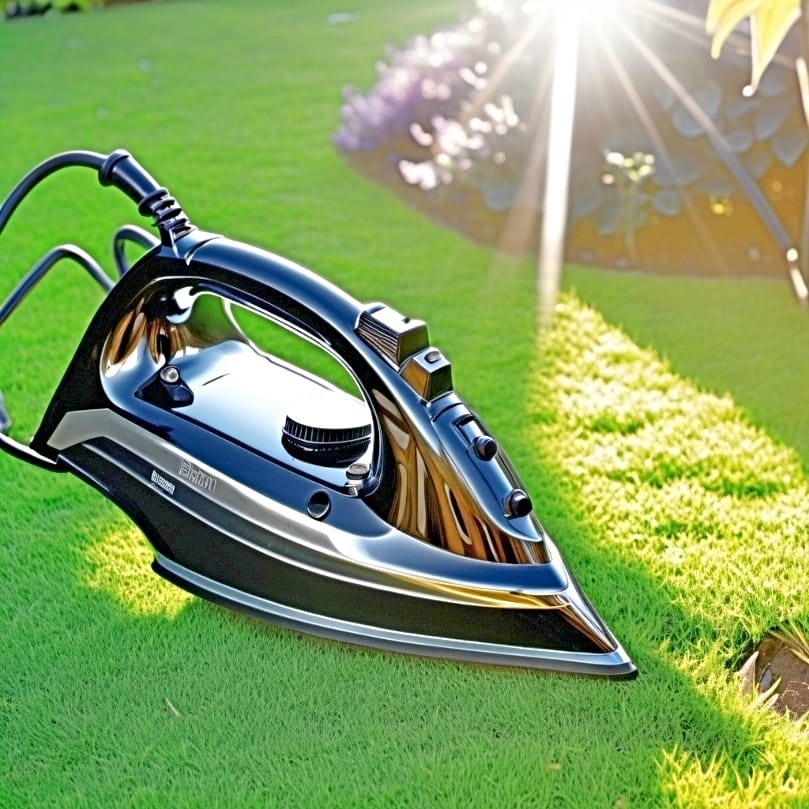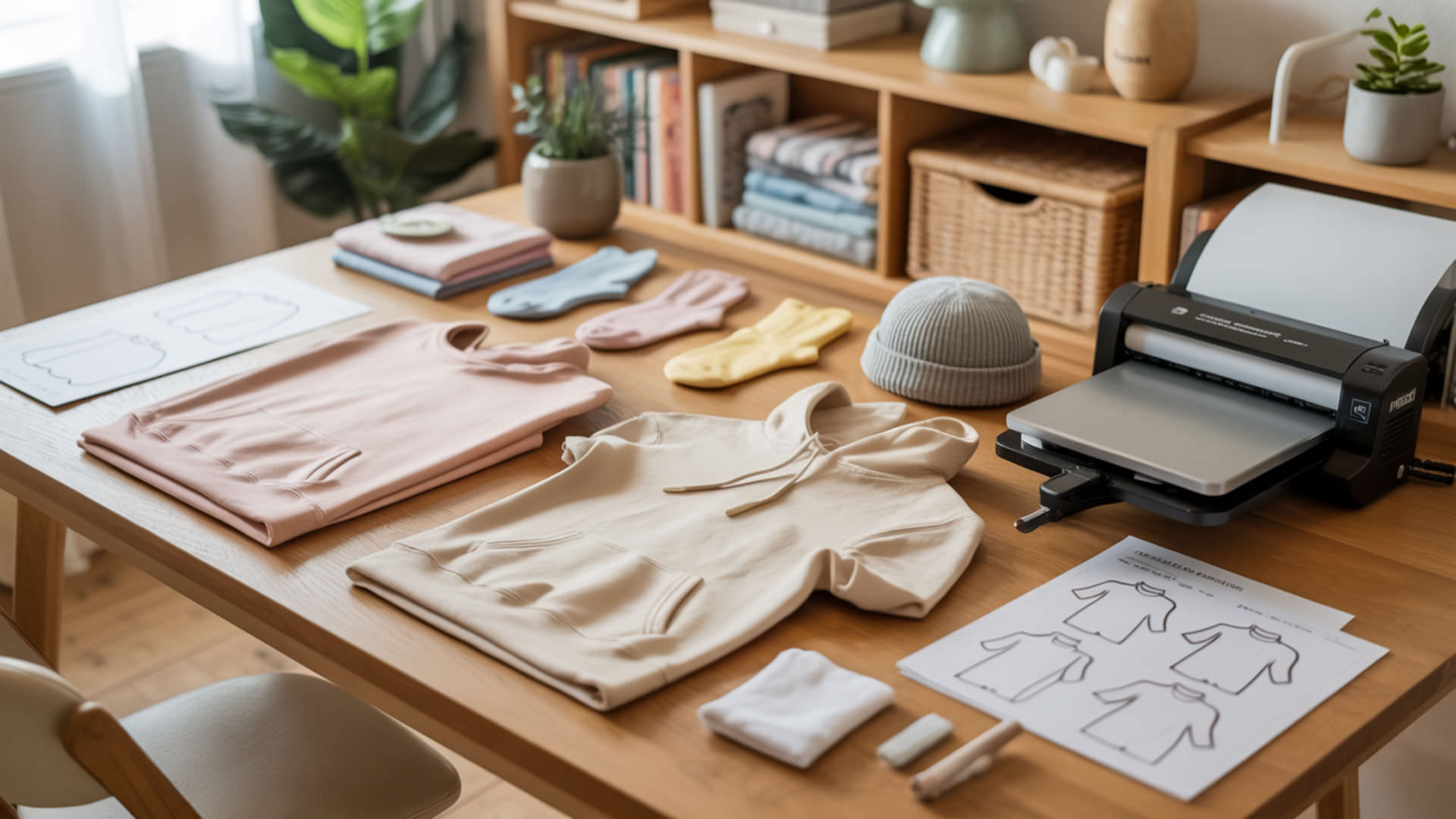Table of Contents
ToggleAre you searching for a step-by-step guide to create long-lasting, personalized sublimation car decals? This article provides you with the essential knowledge on materials, techniques, and steps for crafting decals that complement your vehicle perfectly. Navigate the world of sublimation with confidence, from initial design to final application. We are here to help with all your queries and needs related to sublimation! Enjoy the ride!
Key Takeaways
- Sublimation car decals offer enhanced durability, vibrant colors, and waterproof characteristics, making them ideal for customizing vehicles.
- Creating high-quality sublimation car decals requires a selection of specific tools such as a sublimation printer, sublimation ink, paper, a heat press or gun, and a cutting machine, ensuring long-lasting and vivid results.
- The sublimation process includes designing, printing, applying heat, cutting, and caring for your decals, with troubleshooting tips available for common issues to ensure professional and reliable decal creation.
Understanding Sublimation Car Decals

Sublimation car decals, also known as sublimation stickers, are more than just stickers. They’re a blend of art and science, where designs are transferred from sublimation paper onto vinyl sticker sheets using heat and pressure. Unlike traditional paper stickers, sublimation decals are renowned for their enhanced durability and vibrant colors. As a bonus, they’re also waterproof, making them perfect for outdoor applications like car decals.
The fact that sublimation sticker paper uniquely transfers images with vibrant colors and high durability, positions it as a top choice for crafting custom waterproof stickers and decals for a range of applications. One popular product in this category is the sublimation vinyl sticker paper, also known as sublimation sticker sheet. The answer lies in its superior fade and water-resistance. These properties result in a more durable and visually striking finish, setting it apart from regular sticker paper. With sublimation sticker sheets, you can create multiple designs on a single sheet, making it a versatile choice for various projects.
Materials and Tools for Sublimation Car Decals
Creating sublimation car decals requires a specific set of tools and materials. Here’s what you’ll need:
- Sublimation printer
- Sublimation ink
- Sublimation paper
- Heat press or heat gun[1]
- Cutting machine
These tools and materials are essential for the sublimation car decal process.
⫸ Click Here For Best Selling Sublimation Printers And Products ⫷Let’s delve deeper into each of these components.
Choosing the Right Sublimation Printer
Selecting a suitable sublimation printer is a pivotal stage in the creation of vivid, long-lasting decals. Here are some options to consider:
- Purpose-built sublimation printers, such as the Sawgrass SG500, lauded for its high resolution and maximum print size.
- The beginner-friendly Epson SureColor SC-F170 with its respectable resolution.
- Converting an inkjet printer for sublimation, in which case the Epson EcoTank ET-2720 might be a good fit, featuring a high resolution and large ink tanks for extended print runs.
However, transitioning an inkjet printer for sublimation entails meticulous procedures. You’ll need to:
- Replace regular ink with sublimation ink or a Continuous Ink Supply System (CISS).
- Adjust your printer settings to work with sublimation paper to achieve consistent results.
- Synchronize the sublimation printer’s paper settings with your computer’s preferences for uniform printing conditions.
Selecting High-Quality Sublimation Ink
The sublimation ink you employ holds as much importance as the printer itself. When selecting sublimation ink, consider printer compatibility, versatility for different materials, color vibrancy, anti-clog properties, UV resistance, and user-friendliness. Hiipoo Sublimation Ink is known for its user-friendly features, vibrant print quality, and eco-friendly properties. For creators on a budget, WOKOK Sublimation Ink offers an affordable option without compromising quality. Meanwhile, the Printers Jack Sublimation Ink stands out with its anti-UV qualities, helping keep the designs vivid and preventing fading when exposed to the sun.
For projects demanding substantial black printing, sublimation ink sets that include extra bottles of black ink could enhance project efficiency.[2]
Picking the Perfect Sublimation Paper
Selecting the right sublimation paper is of equivalent importance. Ideal sublimation paper for car decals features fast-drying capabilities, consistent color reproduction, and a high transfer rate, ensuring bright, true-to-life transfers. Brands like A-Sub Sublimation Transfer Paper, Hiipoo Sublimation Heat Transfer Paper, and TexPrint R Sublimation Transfer Paper are highly recommended for their quality and compatibility with various sublimation printers.
Medium weight paper often offers a good balance for sublimation projects, affecting print quality and resulting in better color saturation and image sharpness. Don’t forget, it’s vital to opt for a sublimation paper that pairs well with your specific printer and to test the paper with the material receiving the design transfer, guaranteeing optimal results for car decals.
Designing Your Custom Car Decals
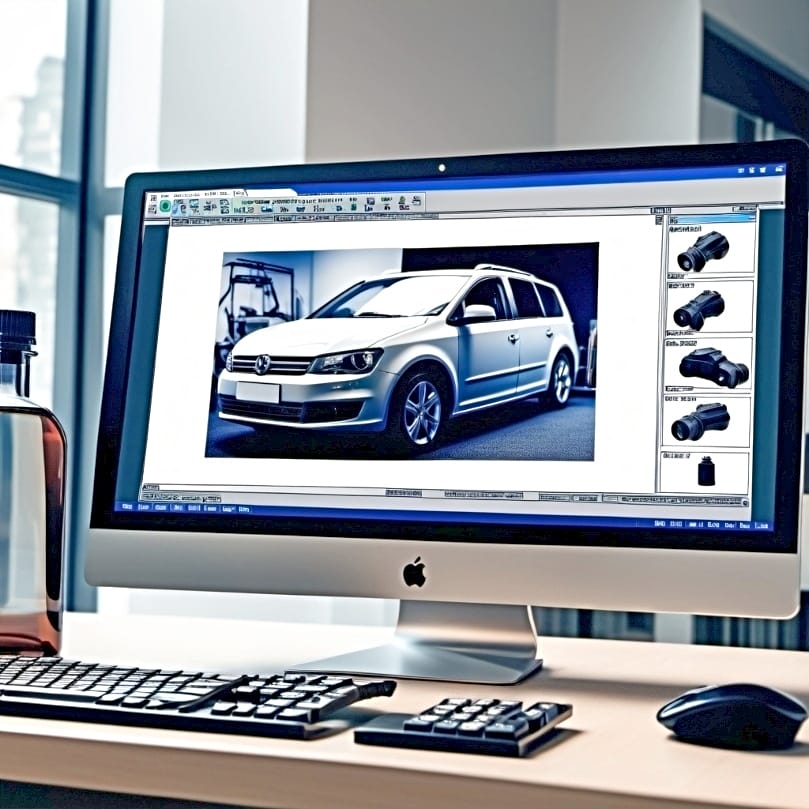
After assembling your materials and tools, unleash your creative potential. Software options for designing custom car decals are aplenty. Industry-standard software such as Adobe Photoshop and Illustrator come highly recommended, with Illustrator being particularly useful for vector-based designs.
For different proficiency levels, the following software options offer various features for decal design:
- Silhouette Studio
- Canva
- Inkscape
- GIMP
- Photopea
The choice of software, such as Cricut Design Space, may depend on factors like the desired level of design complexity, ease of use, access to unique features, or specific file format needs. Don’t forget to make sure all design components fit within the cutting machine’s ‘Print then Cut’ area and to tweak cut settings for kiss-cut designs. Including registration marks or a box in the decal design will guide the cutting machine for precise cuts.[3]
Printing and Preparing Your Sublimation Transfers
Printing and preparing your sublimation transfers is an art in itself. Designs are printed with sublimation ink onto sublimation paper using a sublimation printer. To ensure the design transfers accurately onto the decal material, it’s important to mirror the image during the printing process.
Prior to sublimation, follow these steps:
- Clean the vinyl sticker sheet with painter’s tape to eliminate any dust or debris.
- Once you’ve printed your design, secure the transfer sheet face down onto the vinyl sticker sheet with heat-resistant tape to prevent shifting.
- Keep in mind, it’s required to use sublimation adhesive vinyl sticker sheets for printing the transfers, given their specific design to endure the heat from the sublimation process.
Applying Sublimation Car Decals
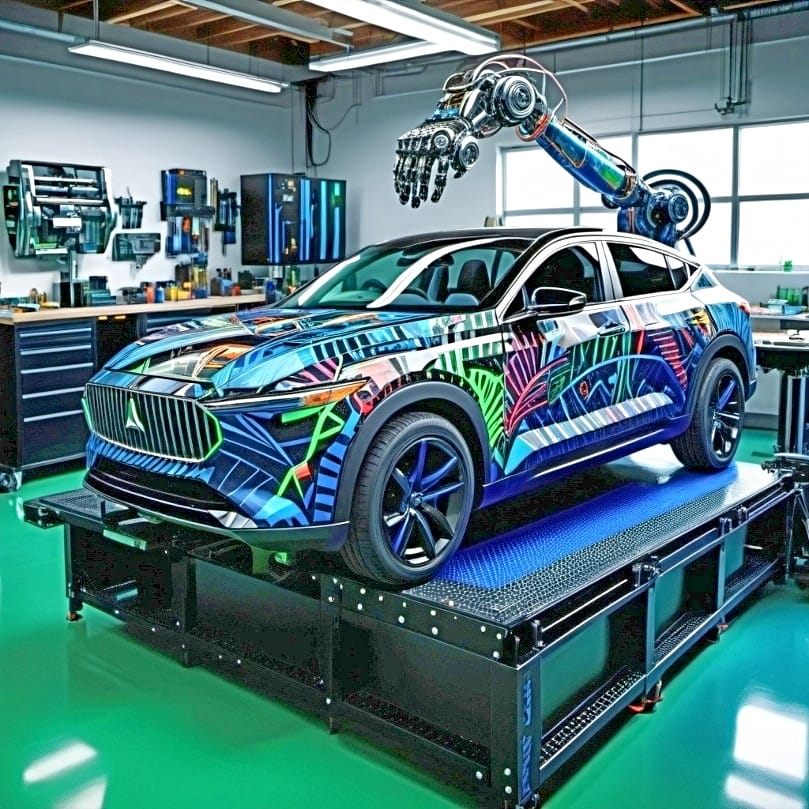
Applying your sublimation car decals is the next exciting step. Here’s how to do it:
- Preheat your heat press or EasyPress to 350°F for 30 seconds before you start.
- Use a pressing mat and butcher paper.
- Place the sublimation decal on the desired area of the car.
- Apply firm pressure for 30 seconds.
If the design isn’t fully transferred, cover it again with parchment paper and press for an additional 10-12 seconds until the transfer is complete. Don’t forget to wear heat-resistant gloves during the sublimation process and make sure the car surface receiving the decal either has a polyester coating or is constructed from a material that binds well with sublimation ink for secure adhesion.
Cutting and Finishing Your Sublimation Car Decals

Following decal application, the next step is to shape them. Here’s how:
- Before cutting, cool the printed sublimated sticker sheet to prevent smudging.
- Use a brayer to smooth it down on the cutting mat, ensuring it’s flattened, especially if there’s paper curl from heat.
- To manage paper curl caused by heat, use a less sticky, used StandardGrip machine mat or a brand-new LightGrip mat to keep the paper flat during the cutting process.
Calibrate your cutting machine before cutting to ensure the accuracy of the print-then-cut feature, critical for correct sticker outlines. Set the machine to ‘Light Cardstock – 65 lb’ with default pressure for kiss cuts, or ‘Medium Cardstock – 80 lb’ with more pressure for die cuts. After cutting, carefully remove any excess sticker material from around the stickers while they are still on the mat for a clean and professional-looking finish.
Caring for Your Sublimation Car Decals
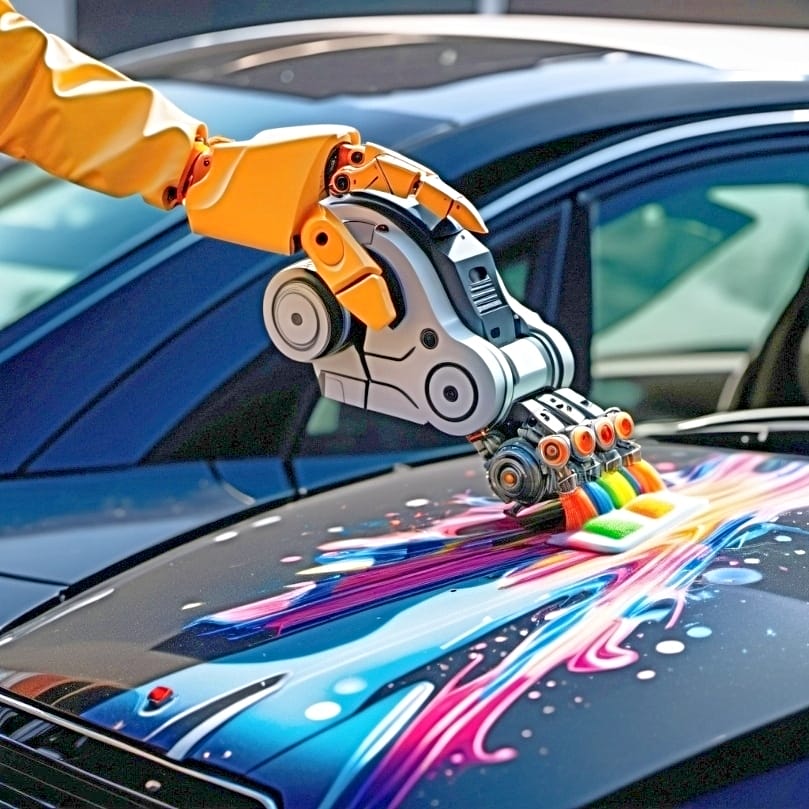
After applying your sublimation car decals, appropriate maintenance becomes necessary. For regular cleaning, use a clean microfiber cloth with non-abrasive household cleaner or pure or denatured ethanol. For tougher stains, stronger cleaners like acetone, nail varnish remover, or turpentine can be used carefully on the decals.[4]
Preserve the appearance and integrity of the decals post-cleaning by following these steps:
- Use a can of air to remove dust and lint.
- Allow the vinyl to completely cool before removing any sublimation paper residue with water and a paper towel.
- When cleaning, lay the car decals flat, coating side up, to protect the edges and coating, decreasing the chance of chipping or damaging the surface.
Troubleshooting Common Issues with Sublimation Car Decals
The process of making sublimation car decals usually goes smoothly, though occasional hiccups are not unheard of. Faded images may be caused by excessive time, temperature, or pressure during heat pressing. Following the recommended settings for the specific blanks can help avoid this. Pre-pressing substrates can remove excess moisture, preventing small dots and other issues in sublimated decals.
Some common issues with image transfers and how to address them are:
- Blurry images can result from too much heat and time; reducing pressing time may produce clearer transfers.
- Banding issues in prints can stem from clogged printer nozzles; regular head cleaning can prevent this.
- Testing colors on a 100% polyester cloth helps see true color output after pressing and mitigate unexpected color changes.
- Using color management tools and charts ensures color accuracy from design software to final decal output.
DIY Sublimation Car Decal Project Ideas

Armed with the knowledge for creating sublimation car decals, you are ready to seek inspiration. Why not create custom car decals with holiday motifs or seasonal designs? Personalize your vehicle and stay festive all year round. Design and apply sublimation car decals with personalized monograms or names, ideal for gifts or personalizing family vehicles.
Express your passion for sports teams or hobbies by adorning your car with custom sublimation decals representing your interests. If you run a business, consider utilizing sublimation car decals for business purposes by printing company logos or promotional messages for increased visibility on the road.
Summary
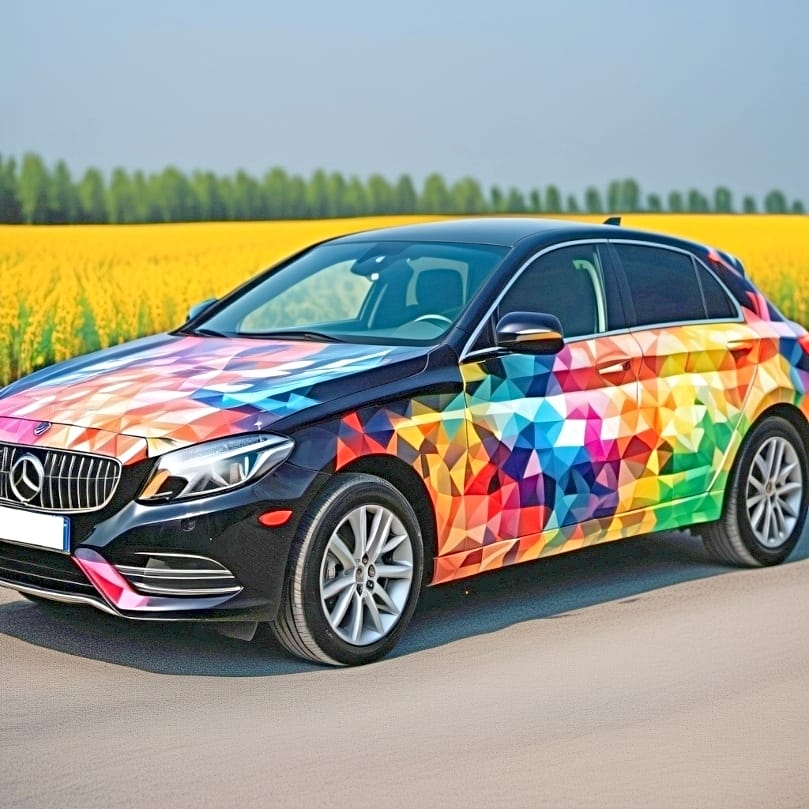
Sublimation car decals are a fun, creative, and durable way to personalize your vehicle. By understanding the process, choosing the right materials and tools, and caring for your decals, you can create vibrant and long-lasting designs. So go ahead, ignite your creativity, and start your sublimation car decal journey today.
Frequently Asked Questions
Can you sublimate on car vinyl?
Yes, you can sublimate on car vinyl, as well as heat transfer vinyl and adhesive vinyl materials. It’s a great way to customize your car’s appearance.
Will sublimation stay on vinyl?
Yes, sublimation will stay on vinyl if you use clear, heat transfer, or adhesive vinyl that is either polyester or polymer-coated, along with sublimation ink and a heat press for high-quality results. Temperature control and using high-quality ink are important for successful sublimation on vinyl.
Are sublimation stickers waterproof?
Yes, sublimation stickers are waterproof, making them suitable for indoor and outdoor use. You can create a variety of custom stickers with these durable and versatile stickers.
What is the difference between sublimation sticker paper and regular sticker paper?
Sublimation sticker paper offers greater fade and water resistance than regular sticker paper, making it more durable and visually striking for your projects. Try sublimation sticker paper for long-lasting and vibrant results!
Why do I need to mirror the image during the printing process?
Mirroring the image before printing ensures that the design transfers accurately onto the material you are printing on. It’s an important step to avoid any unwanted reversal of the image.
References
- Heat Gun Advisory. (n.d.-b). Office of Environmental Health and Safety. https://ehs.princeton.edu/heat-gun-advisory
- Porges, S. (2019, June 10). Inside the secretive world of counterfeit Printer Ink–And the raids used to fight back. Forbes. https://www.forbes.com/sites/sethporges/2019/06/10/inside-the-secretive-world-of-counterfeit-printer-ink-and-the-raids-used-to-fight-back/?sh=2ec810a05376
- Cricut Learn. (n.d.-c). Cricut Learn. https://learn.cricut.com/
- Amable, J. (2020, September 24). What is denatured alcohol and why is it in my skincare products? Healthline. https://www.healthline.com/health/alcohol/alcohol-denat







